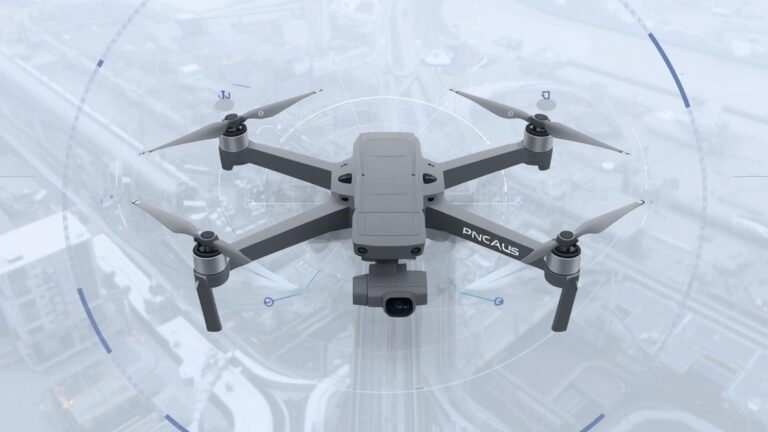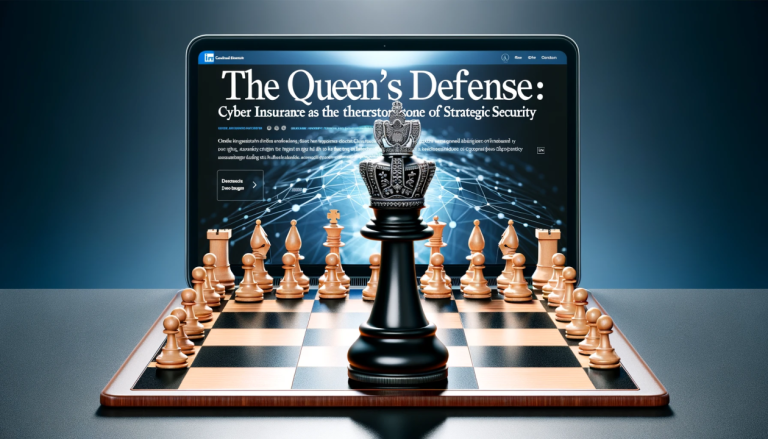As companies deploy more AI-driven software bots and automated systems, each of those “agents” needs credentials and privileges to do its job. If those credentials are stolen or misused, the consequences can be dire: think fund theft, rogue transactions, impersonation scams, and regulatory breaches. Here we analyze what the Palo Alto–CyberArk combination means from an insurance perspective, and what new coverages might be needed to address AI identity risks.
AI Agents Have Identities Too
Traditionally, identity security is about human users: employees, customers, admins – making sure the right people have the right access. But now, consider a trading algorithm that logs into a stock exchange API, or a customer service chatbot with access to customer records, or an AI system managing smart building controls. These are non-human identities often with high-level access. They use digital credentials (API keys, tokens, certificates, login accounts) to interface with systems.
In the industry, we call them machine identities or service accounts. And with the rise of AI, the number of these identities is exploding. An AI agent might even have an identity profile similar to an employee: an account in the system, certain permissions granted, maybe even an email or user ID.
The alliance significance: Palo Alto Networks is a cybersecurity powerhouse known for network and cloud security, and CyberArk is a leader in privileged access management (PAM) – technology that secures accounts with elevated permissions. By joining forces, they signal that protecting machine and AI identities is now a top priority. They plan to integrate identity security deeply into AI-driven platforms. In simple terms, they want to make sure that every AI agent’s “identity” is fortified so hackers can’t easily impersonate or hijack it.
Risks of AI Identity and Credential Misuse
From an insurer’s lens, why does securing AI identities matter? Because if those identities are compromised, you suddenly have new flavors of incidents that might trigger claims:
- Funds Transfer Fraud by AI Impersonation: Imagine an AI agent in a finance department that automatically moves money or approves payments. If attackers gain its credentials, they can instruct it (or imitate it) to transfer funds to their own accounts. This is analogous to the classic scenario of a hacker stealing a CFO’s email to send fake invoices – but now the “CFO” is an AI process with direct payment privileges. This could lead to substantial losses.
- Data Breach via Stolen AI Credentials: An AI customer support bot might have access to customer personal data. If its access key is stolen, an attacker could query the AI or the database behind it to exfiltrate sensitive info, all while appearing as a legitimate AI account. To the company’s security systems, it may look like the trusted bot is doing normal operations, meanwhile data is leaking.
- Compliance and Governance Breaches: AI agents might be programmed to perform actions within certain policy bounds. If an attacker takes over the identity, they could make the AI perform actions outside those bounds – like accessing restricted files or executing unauthorized trades – leading to violations of laws or regulations. For example, an AI trading bot could be manipulated to break trading rules, landing the firm in regulatory trouble.
- Service Disruption: Some AI agents manage critical infrastructure (like an AI that auto-scales servers or controls equipment). Credential theft could allow saboteurs to disrupt operations or damage equipment. The result could be property damage or significant business interruption.
In essence, every AI identity is a new attack surface. Cyber criminals are certainly eyeing these. They might find it easier to steal an API key from a poorly secured DevOps pipeline than to phish a human. And once they have that key, it’s like a skeleton key if the AI identity isn’t closely monitored.
Insurance Implications: Are These Losses Covered?
Now, consider how these scenarios fit into current insurance coverages:
- Cyber Insurance: Many cyber insurance policies cover data breaches and cyberattacks, including incidents of unauthorized access and theft of funds if resulting from a covered cause (like hacking). If an AI’s credentials are stolen by hacking, the insurer would likely treat it as a security breach. The data theft scenario or a system manipulation would typically be covered under the liability and maybe the incident response costs of a cyber policy.
- Crime Insurance (Fidelity Bonds): For scenarios involving fraudulent fund transfers, traditional cyber policies sometimes exclude them, pushing them under crime insurance or a social engineering fraud rider. If an AI is tricked or impersonated into sending money, is that a “computer fraud” or “funds transfer fraud” event? Insurers will need to clarify. Most likely, insurers will cover it if you have the right endorsement, but they’ll scrutinize whether proper authentication controls were in place.
- Professional Liability: If an AI identity misuse leads to, say, providing incorrect output that harms a client (maybe an attacker uses the AI account to send faulty advice to clients), a professional liability policy might come into play. But that’s a complex chain of events, and coverage would depend on the specifics.
- Directors & Officers: If a major breach via AI identity causes shareholder lawsuits (for negligence in protecting assets), D&O policies could even be triggered.
The problem is many policies were not written with “AI agent impersonation” in mind. So there could be ambiguities or disputes. We might encounter claims where the insurer says: “The policy excludes losses caused by unauthorized use of credentials” whereas the insured says “But this was an AI’s credentials stolen by a hacker, which is a covered cyber event!” Resolving these will take time and probably some high-profile cases.
Crafting Coverage for AI Identity Security
Clearly, there’s a gap emerging. That’s where new coverages or at least new policy language will be needed. Insurers, in response to the Palo Alto–CyberArk developments and the trend they represent, might consider:
- Explicit Coverage for Credential Theft and Misuse: Modern cyber policies are trending toward explicitly covering or excluding certain things. Insurers should explicitly state that theft of machine credentials (API keys, service account passwords, certificates) resulting in unauthorized access is covered. And not just covered – it should cover both resulting data breaches and financial losses. Some policies historically had vague language around “computer fraud” that didn’t account for something like an AI making an authorized transfer under duress. Clarity here will prevent claim fights.
- AI Impersonation Endorsement: A special add-on that covers losses when an AI agent is impersonated. For example, if someone deepfakes an AI agent’s communications or uses its account illicitly, the endorsement could cover both first-party losses (money stolen, system damage) and third-party liability (like customers suing because the AI, while hijacked, gave them bad info or allowed their data out).
- Privileged Access Breach Sublimit: Because a lot of AI agents require privileged access (that’s why CyberArk’s role is key), insurers might treat those like high-hazard assets. They could impose sublimits or special deductibles for incidents arising from privileged account compromise. Alternatively, they might require higher security standards (multi-factor authentication, vaulting of credentials, monitoring of AI agent activity) in order to cover those at full policy limits.
- Coverage for Regulatory Fines: If an AI identity incident leads to regulatory fines (say a privacy violation or a SOX compliance issue), insurers often have a patchwork approach to fines. Cyber policies sometimes cover fines where legal, but might not automatically include these new scenarios. Insurers could tailor policies for industries (like finance or healthcare) to ensure coverage of penalties that result specifically from AI-related identity breaches. That could be a selling point for clients worried that their AI could inadvertently put them in non-compliance.
- Business Interruption from AI Failures: If a compromised AI identity is used to sabotage operations (for instance, messing up a manufacturing line or cloud environment), it could cause downtime. Cyber business interruption coverage should extend to these cases. It likely does now, but new scenarios can always introduce grey areas. Insurers might adjust the triggers for BI coverage to include “malicious misuse of automated processes” not just traditional system outages.
Risk Management: Insurers and the Alliance Approach
Insurers will not just pay claims; they want to prevent them. This is where something like the Palo Alto–CyberArk alliance is actually helpful for insurers and insureds alike. Strong identity security for AI agents will reduce the likelihood of catastrophic incidents. Insurers may start embedding risk management requirements into policies, such as:
- Use of PAM Solutions: Requiring companies to use privileged access management (like CyberArk) for all sensitive AI accounts. This means AI credentials are stored securely, rotated frequently, and access is monitored.
- Zero Trust Architecture: Insisting on zero-trust principles, where even AI-to-machine communications are continuously verified. If an AI suddenly tries to do something out of the ordinary, it should face an extra check.
- Audit Trails for AI Actions: Keeping logs of what AI agents do and when. If something goes wrong, having an audit trail helps both in responding (and in filing a claim with evidence of what happened).
- Incident Response Planning: As part of underwriting, asking if the company’s incident response plan accounts for an AI/machine identity breach. This includes having a way to quickly revoke an AI’s credentials or shut it down if compromise is suspected.
From the insurance perspective, the alliance of Palo Alto and CyberArk underscores that technology companies are addressing the threat. This means insurers can have more confidence that solutions exist for clients to implement. It wouldn’t be surprising to see insurers partner with such tech providers – for instance, offering premium credits or better terms to clients who deploy top-notch identity security tools for their AI systems. We’ve seen similar things where cyber insurers encourage policyholders to use certain antivirus or monitoring services; this could extend to identity security solutions.
New Coverage Horizons – AI Identity Insurance?
Looking forward, we might even see niche insurance products specifically called “AI Identity Insurance” or “Machine Identity Protection.” These could function similarly to cyber insurance but with a laser focus. They might cover:
- Liability if your AI is spoofed or hijacked and causes harm.
- Costs to recover from an AI identity breach (forensics, recovery of systems, notifying affected parties if data was involved).
- Perhaps even loss of an AI – if an AI agent’s model or algorithms were tampered with or stolen as part of an identity breach, covering the cost to restore or retrain it.
While standard cyber insurance is likely to adapt to cover these issues, a specialized product might appeal to companies heavily invested in AI, who want to be sure every nuance is addressed.
Conclusion: A Secure Identity for a Secure AI
The Palo Alto–CyberArk deal highlights a crucial fact: security for AI is about more than just smarter algorithms; it’s about robust identity and access control. From an insurance angle, this evolution in cybersecurity translates directly to risk management and coverage considerations. AI agents can be as powerful – and as vulnerable – as human users. If their “identity” is left unguarded, the fallout can trigger numerous insurance policies and potentially fall through coverage cracks.
Insurers must respond by updating policies to explicitly cover (or at least not exclude) losses from AI identity misuse. At the same time, they should leverage the improving tech landscape by encouraging policyholders to implement solutions from alliances like Palo Alto–CyberArk. This one-two punch of prevention and protection will allow businesses to confidently deploy AI agents, knowing that both technology and insurance safety nets are keeping pace with innovation.
In summary, the alliance is a wake-up call: As AI becomes a first-class digital citizen in enterprises, its identity needs protection just like a human’s identity. And where there is residual risk, insurers will be there to cover, indemnify, and guide companies through the aftermath of incidents that, while novel, echo a timeless insurance principle – protect the things (and now, agents) that matter most.






























































































































